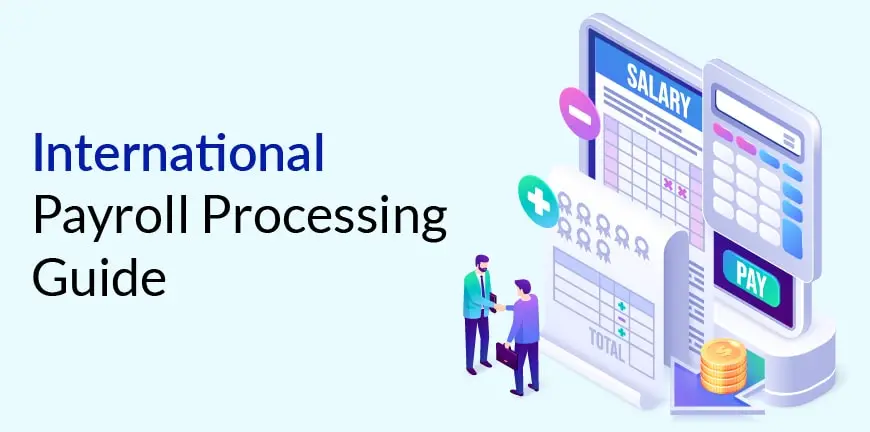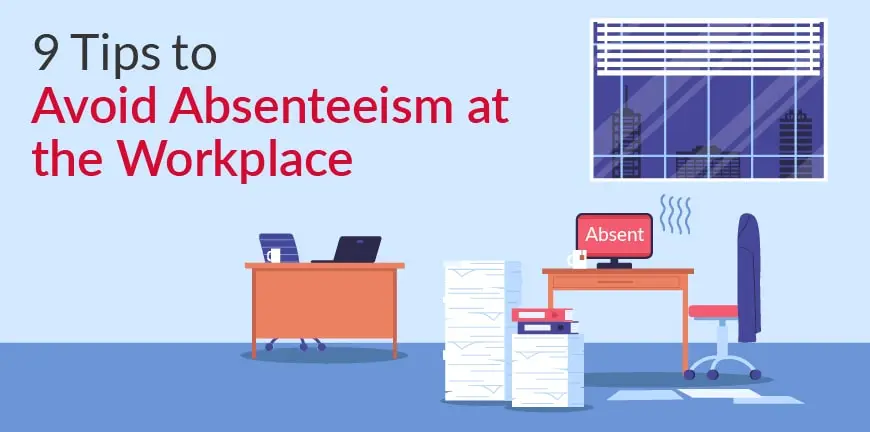
International Payroll Processing Guide
18/03/2024
Why is Dubai the Hottest Destination for Remote Workers?
26/03/2024Employees influence the success of your business. But what kind of employees? Employees that are engaged, reliable, and show up when they are required to. Unfortunately, it isn’t an ideal world. Most times organizations find themselves in a position where more than one important team member doesn’t show up at all. Not only does that scenario cause unrest and chaos but leaving the absenteeism situation unmanaged can lead to low productivity, efficiency, and morale.
Let’s be clear, we aren’t trying to target a particular side. There may be faults from both ends, the employer as well as the employee, that have caused absenteeism leading to an extremely non-ideal situation.
What is Absenteeism?
Absenteeism refers to the scenario where an employee frequently misses work or is absent form work with or without notice. Of course, everybody takes time off when they have a valid reason, like a vacation, for family emergencies, childcare, or if they are suffering from a minor illness etc, and this is absolutely acceptable. But if the pattern continues and the employee frequently shows up late, leaves early or takes time off without stating a valid reason for the absence, then it is time to investigate.
Remember that absenteeism can occur for several reasons. Some of these reasons maybe influenced by the organization or workplace surroundings, or it could be other personal employee issues. While you may not be able to devise a solution for each of it, there are certain measures you can take to reduce its effects.
9 Tips to Reduce Absenteeism
While you cannot complete solve the problem of absenteeism, there are ways you can control it. Keep in mind that while it is important to make sure the right policies be created to manage employees it is also important to ensure that you are keeping an eye out on employee wellness and happiness. This can usually solve the actual problem most of the times.
Vincent Van Gogh once said, “Great things are done by a series of small things brought together.” Similarly, the solution to solving the problem of absenteeism involves a series small thing that needs to be implemented an intelligent mix of setting right policies and supporting employee work-life balance.
1. Check in with your Employees Frequently
Your employees want to feel cared for regardless of other materialistic compensation and benefits you provide them with. They spend more than half their day in the workplace, it is natural for them to want to feel needed. Make sure to check in on your employees for time-to-time. You have no way of knowing what is happening every minute of every day with every employee. There may have been bullying or other mental issues your employees maybe dealing with silently. Maintaining an open dialogue with employees can help HR (Human Resource) and managers to identify an employee’s issues early on and prevent potential absenteeism problems.
2. Create Clear Attendance Policies and Procedures
“We are what we repeatedly do. Excellence, then, is not an act, but a habit.” Aristotle. There is a reason employers mandate the presence of employees for a certain, period in a week. Routines are important for an individual’s mental health, discipline as well as efficiency. Make sure that your employees understand what is expected from them in terms of attendance. Establish clear policies that states the requirement to report their absences- and the consequences of unreported and unsanctioned absences as well as excessive absenteeism.
While you do have to take your employees needs seriously, they must take the company policy seriously as well. Remember, It is always a two-way street.
3. Encourage them to take Paid Time Off, Promoting a Healthy Work-Life Balance.
We have all heard of “All work and no play make jack a dull boy.” Somehow, we have strayed away from this thought, on the contrary, this is seen as a strict no-no for adults. Remember that all work and no play, not only makes jill and jack dull but kills the potential of discovery, mastery, and openness to change and flexibility hindering innovation.
Encourage your employees to take vacations and paid time off instead of scrutinizing them for the same. Your encouragement can have a positive effect on their system, allowing them to return to work fresh and rejuvenated. Taking advantage of vacation days can help them feel energized and help the company run at its full potential reducing the chances of absenteeism.
4. Reward them for their Achievements and Efforts
A survey revealed that 69% of employees would stay on at the firm if there are better rewards and recognition programs. It matters to every employee that their work and efforts contribute to the company’s success, is valued, and will be rewarded eventually. Organize rewards and recognition programs quarterly. The ones rewarded will surely be more productive the next quarter and surprisingly you will see that the ones that were not rewarded work harder in a hope to get the recognition in the next quarter. It is a win-win either way.
5. Address Unsanctioned Absences Immediately
Now we do not mean handing out consequences to employees right away. Try to find out the reason behind their absences. If they have a valid reason, try to be empathetic and help them in whatever you can by giving them some leeway. Of course, when the act has been done deliberately with nothing to show for, then you must take appropriate action as well.
6. Offer Flexible Work Options
Again, this is an excellent idea to help your employees work life balance and in turn contributing to their mental health and well-being.
It does not hurt to be a little mindful of the current scenario especially in metropolitan cities where commuting takes a toll on individuals owing to heavy traffic and long hours of commute due to the same. It is not the worst idea to help them feel at ease with flexible work arrangements. When paired with the right attendance policy, it is an excellent solution to avoid excessive absenteeism.
Flexible working hours is known to boost motivation and build loyalty, making the workplace a positive environment to work in.
7. Invest in Employee Development and Engagement
Work can start to get monotonous really quickly, leading to employee disengagement. It is important to invest in employee training and development if you do not want your productivity going downhill. Encouraging them to learn new skills and taking ownership of their career growth will push them towards being more invested in the company’s success as well.
Not only do training opportunities help boost morale, performance and trust in the workplace but also demonstrates your commitment towards their career growth. This will eventually lead to a happier workforce and in turn result in less absenteeism.
8. Set Reasonable Goals and Workloads
Work pressure is one of the biggest reasons for decline in mental health and well-being of employees, and this can eventually turn into absenteeism due to burnout and frustration caused by overworking. You must make sure that the workloads of your employees are reasonable. Do not load an employee with more work than they can take on, with a desire to get more out of them. The goals and metrics you set for each of them must achievable, fair, and properly resourced.
9. Provide Mental Health Resources
By resources, we mean counselling services, online courses on mindfulness and stress management etc. Employees need to be able to talk about their mental health issues openly. And to help with this, along with providing the above resources, employers must also make sure that employees feel safe accessing them without the fear of retaliation or discrimination. Sometimes, just being heard can solve half of the mental health problems employees may be suffering from. This can work wonders in reducing absenteeism.
Wrapping up
Fostering a positive work environment where employees feel supported should be a top priority for any organization. By ensuring the health and well-being of your team, everybody wins. As an organization it is time to take your first step towards creating a better working environment today, tomorrow and in the future.
Contact Us For Business Enquiry

Rajkumar Shanmugam
Rajkumar Shanmugam is the Head of HR at ALP Consulting, bringing over 19 years of comprehensive HR leadership experience across India and international markets. His expertise spans talent acquisition, employee relations, performance management, compliance, and HR transformation. Rajkumar has a proven track record of driving people-centric initiatives, enhancing workplace culture, and aligning HR strategy with business goals. With extensive experience in US staffing operations and global mobility, he continues to lead organizational excellence through innovation and employee engagement.




